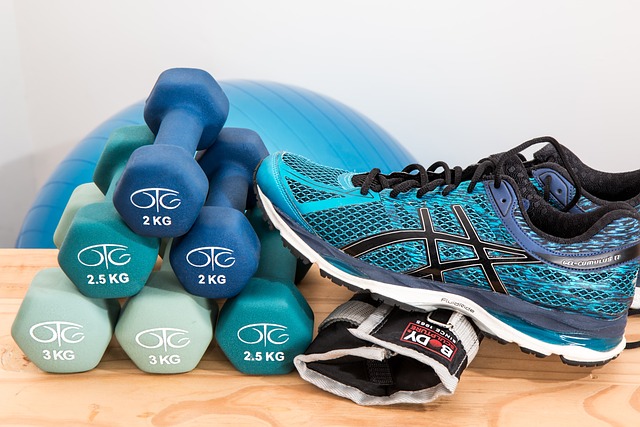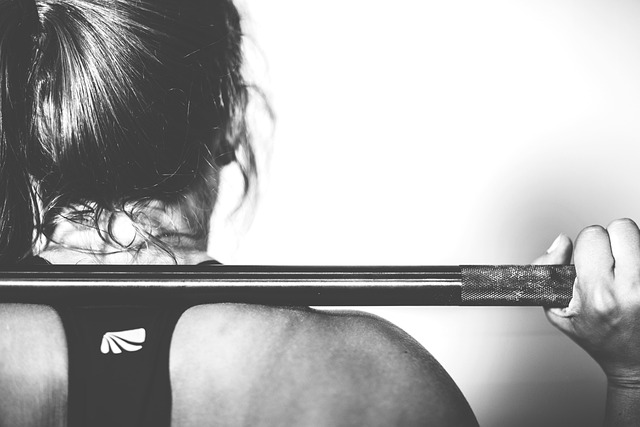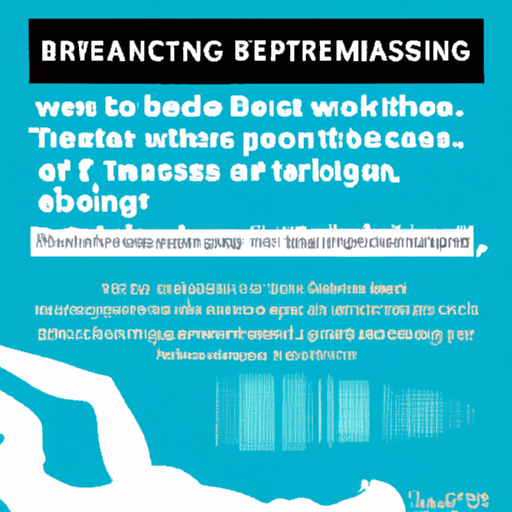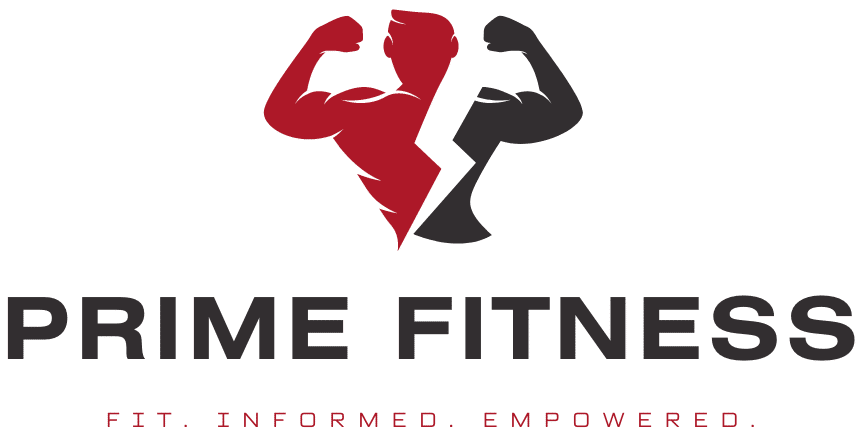In this article, we will discuss the impact of breathing techniques on your workout routine. You will learn how proper breathing can enhance your performance, increase endurance, and improve overall results. We will also explore different breathing exercises that you can incorporate into your workouts to maximize their benefits. By understanding the importance of proper breathing during exercise, you will empower yourself to optimize your fitness journey.

The Importance of Proper Breathing Technique
When it comes to exercise, most people focus on physical aspects such as strength, flexibility, and endurance. However, one crucial element that is often overlooked is the role of proper breathing technique. The way you breathe during a workout can significantly impact your performance, endurance, and overall well-being. Understanding and implementing the right breathing techniques can elevate your workouts to a whole new level.
Understanding the Role of Breathing in Exercise
Breathing is an essential function of the human body, providing us with the oxygen needed to sustain life. During exercise, our muscles require more oxygen to perform at their best, and proper breathing helps deliver that oxygen efficiently. Deep breathing engages the diaphragm, a muscle located at the base of the lungs, allowing for maximum oxygen intake. Additionally, exhaling removes carbon dioxide, a waste product produced by the body during exercise.
Benefits of Proper Breathing Technique during Workouts
Implementing proper breathing techniques during workouts offers several benefits. Firstly, it improves oxygen uptake, which enhances endurance and allows you to sustain high-intensity exercises for longer periods. Secondly, it promotes relaxation and reduces stress, allowing you to maintain focus and perform better. Lastly, correct breathing technique optimizes energy utilization, preventing exhaustion and fatigue.
Common Mistakes Made in Breathing during Exercise
Before delving into the different breathing techniques for specific workouts, it is crucial to address the common mistakes people make in their breathing techniques. Many individuals hold their breath while lifting weights or performing intense exercises, which can lead to a buildup of tension and hinder performance. Shallow breathing, where breaths are quick and superficial, prevents the body from receiving enough oxygen and can lead to lightheadedness or dizziness. It is essential to be mindful of these mistakes and work towards correcting them.
Different Breathing Techniques for Various Types of Workouts
Different types of workouts require different breathing techniques to maximize performance and prevent injury. Let’s explore the specific breathing techniques for cardiovascular exercises, weightlifting and strength training, as well as yoga and Pilates workouts.
Breathing Techniques for Cardiovascular Exercises
Cardiovascular exercises, such as running, cycling, or swimming, require a steady flow of oxygen to sustain endurance. The most effective breathing technique for cardiovascular exercises is diaphragmatic breathing. This technique involves inhaling deeply through your nose, allowing your diaphragm to expand, followed by a controlled exhale through your mouth. It is important to maintain a rhythmic pattern of breathing to synchronize it with your movement, allowing for a smooth and uninterrupted flow of oxygen.
Breathing Techniques for Weightlifting and Strength Training
Weightlifting and strength training exercises often involve exertion and resistance. To maintain stability and power during these exercises, it is crucial to engage your core and control your breathing. The recommended technique is to exhale during the exertion phase of the movement, such as lifting or pushing, and inhale during the return or rest phase. This controlled breathing helps stabilize the body, protect the spine, and maximize strength output.
Breathing Techniques for Yoga and Pilates Workouts
Yoga and Pilates workouts focus on breath control and mindfulness. Proper breathing techniques in these practices help connect the mind and body, enhance flexibility, and improve overall concentration. A common technique used is Ujjayi breath or “victorious breath.” Ujjayi breath involves inhaling and exhaling slowly through the nose while slightly constricting the back of the throat. This technique creates a gentle ocean-like sound and helps regulate the pace of the breath, promoting relaxation and focus.
Effects of Different Breathing Patterns on Performance
The way you breathe during a workout can significantly impact your performance and overall well-being. Let’s explore the effects of different breathing patterns on performance.
Effect of Shallow Breathing on Performance
Shallow breathing, where breaths are quick and superficial, limits the amount of oxygen reaching the muscles. This reduces endurance, causes fatigue, and can lead to lightheadedness or dizziness. Shallow breathing also increases the risk of developing muscle cramps, as the muscles do not receive enough oxygen to function optimally. It is essential to be mindful of your breathing and make a conscious effort to take slow, deep breaths during exercise.
Effect of Deep Breathing on Performance
Deep breathing, on the other hand, maximizes oxygen intake and enhances endurance. By engaging the diaphragm and taking long, deep breaths, you can deliver more oxygen to your muscles, improving their performance and reducing the risk of fatigue. Deep breathing also promotes relaxation and reduces stress, allowing you to focus and perform at your best.
Effect of Coordinated Breathing with Movement on Performance
Coordinated breathing with movement, where your breath aligns with the rhythm of your exercises, can significantly impact your performance. This synchronization allows for a smoother flow of energy and oxygen throughout the body, enhancing the efficiency and effectiveness of each movement. By coordinating your breath with your exercise routine, you can increase your overall power, stability, and endurance.
Maximizing Endurance and Stamina through Breathing Techniques
Endurance and stamina are crucial components of any fitness regimen. Proper breathing techniques can help maximize these aspects of your fitness journey. Let’s explore how breathing techniques can improve endurance and stamina.
Improving Oxygen Intake for Enhanced Endurance
By implementing deep breathing techniques, you can increase your oxygen intake and enhance your endurance. Deep breaths engage the diaphragm and allow for maximum oxygen delivery to the muscles. This increased oxygen intake delays the onset of fatigue, allowing you to push through challenging workouts for longer periods.
Using Breath Control to Prolong Overall Stamina
Breath control is a powerful tool to prolong overall stamina. By consciously controlling your breath and maintaining a steady rhythm during exercise, you can optimize the fuel utilization in your body. This leads to improved energy efficiency and a delayed onset of fatigue, allowing you to sustain high-intensity workouts for extended durations.
Increasing Efficiency of Energy Utilization through Proper Breathing
Proper breathing techniques help increase the efficiency of energy utilization in the body. Deep breathing and coordinated breath with movement ensure a steady supply of oxygen to the muscles, which enhances their ability to convert fuel into energy. This increased efficiency minimizes energy wastage and maximizes workout effectiveness.

Breathing Techniques for Stress Reduction and Relaxation
Exercise is not only about physical fitness but also about mental well-being. Breathing techniques can be powerful tools for stress reduction and relaxation during workouts. Let’s explore how you can incorporate these techniques into your routine.
Utilizing Breathing Techniques for Stress Relief
Stress relief is a significant benefit of incorporating breathing techniques into your workouts. Deep breathing activates the body’s relaxation response, reducing stress hormone levels and promoting a state of calmness. By focusing on slow, controlled breaths, you can release tension and stress, allowing you to fully engage in your workout and experience its positive effects on your mental well-being.
Incorporating Deep Breaths for Relaxation and Recovery
Deep breaths can also aid in relaxation and recovery. After an intense workout, deep breathing can help regulate your heart rate and bring your body back to a state of relaxation. By incorporating deep breaths into your post-workout routine, you can enhance the recovery process and promote a sense of calm and balance.
Promoting Mindfulness and Calmness through Controlled Breathing
Controlled breathing during workouts promotes mindfulness and calmness. By focusing on your breath and the sensations in your body, you can enhance your mind-body connection. This mindfulness allows you to stay present in the moment, reduce distractions, and fully engage in your workout. By incorporating controlled breathing techniques, you can elevate your workouts to a meditative experience.
Injury Prevention and Proper Breathing Techniques
Proper breathing techniques also play a crucial role in injury prevention during workouts. Let’s explore how these techniques can help protect your body from harm.
Protecting the Spine and Preventing Injury with Correct Breathing
Proper breathing techniques can help protect the spine and prevent injury, especially during exercises that involve lifting or carrying weights. By engaging the core muscles and practicing controlled breathing techniques, you stabilize the spine and reduce the risk of strain or injury. This proper alignment and support allow you to perform exercises safely and effectively.
Maintaining Core Stability and Lumbar Support through Breath Control
Breath control plays a vital role in maintaining core stability and lumbar support. By exhaling during exertion and inhaling during the return phase of an exercise, you engage the core muscles and provide support to the lower back. This breath control helps maintain proper form and alignment, reducing the risk of lower back injuries.
Reducing the Risk of Strains and Overexertion with Proper Breathing
Proper breathing techniques can also help reduce the risk of strains and overexertion. By synchronizing your breath with your movements, you can maintain a steady pace and avoid sudden bursts of energy that could lead to injury. Taking slow, controlled breaths during exercise helps regulate your exertion levels, preventing overexertion and reducing strain on the muscles and joints.

Breathing Techniques for Mental Focus and Concentration
Breathing techniques can significantly improve mental focus and concentration during workouts. Let’s explore how you can harness the power of your breath to sharpen your cognitive function.
Enhancing Mind-Body Connection through Breath Awareness
Breath awareness is a key component to enhance the mind-body connection during workouts. By focusing on your breath and the sensations in your body, you can develop a heightened sense of awareness. This awareness allows you to better understand the signals your body is sending, adjust your form and technique accordingly, and fully engage in your workout.
Increasing Concentration and Sharpening Cognitive Function
Proper breathing techniques increase concentration and sharpen cognitive function. Deep, controlled breaths engage the parasympathetic nervous system, responsible for relaxation and focus. This activation promotes mental clarity, enabling you to stay present, block out distractions, and maintain high levels of concentration throughout your workout.
Utilizing Breathing as a Tool for Meditation and Mindfulness
Breathing can also be used as a tool for meditation and mindfulness during workouts. By incorporating slow, intentional breaths into your routine, you can cultivate a sense of calmness and peace. This mindfulness helps alleviate stress, reduce anxiety, and enhance the overall enjoyment of your exercise session.
Breathing Techniques for Rehabilitation and Recovery
Breathing techniques can aid in rehabilitation and recovery after an injury or intense workout. Let’s explore how these techniques can facilitate healing and accelerate the recovery process.
Facilitating Healing and Recovery through Controlled Breathing
Controlled breathing can facilitate healing and recovery by optimizing oxygenation and blood circulation. Deep breaths increase the oxygen supply to injured tissues, promoting cellular repair and regeneration. This enhanced oxygenation helps reduce inflammation, accelerate healing, and expedite the recovery process.
Promoting Blood Circulation and Oxygenation for Effective Rehabilitation
Proper breathing techniques also promote blood circulation and oxygenation for effective rehabilitation. Deep, controlled breaths increase the efficiency of blood flow, ensuring that oxygen-rich blood is delivered to the injured areas. This increased circulation helps remove metabolic waste products and provides essential nutrients for faster healing and recovery.
Reducing Muscle Tension and Accelerating Recovery with Proper Breathing
Proper breathing techniques can reduce muscle tension and accelerate recovery. By using deep breaths to relax the body and release tension, you can alleviate muscle soreness and promote muscle recovery. Deep breathing also activates the parasympathetic nervous system, which triggers the body’s relaxation response and supports the recovery process.

Incorporating Breathing Techniques into Your Fitness Routine
Now that we understand the importance of breathing techniques, let’s explore how you can incorporate these techniques into your fitness routine.
Finding the Right Breathing Technique for Your Exercise Regimen
To find the right breathing technique for your exercise regimen, it is essential to experiment and listen to your body. Different workouts may require different breathing patterns, so be open to trying various techniques. Pay attention to how your body responds to different breathing techniques and adjust accordingly. It may be helpful to seek guidance from a fitness professional or instructor to ensure you are using the correct technique for your specific exercises.
Gradually Incorporating Breath Control into Your Workouts
Incorporating breath control into your workouts should be a gradual process. Start by focusing on your breath during warm-up exercises, gradually implementing the proper technique as you progress to more intense movements. As you become more comfortable with breath control, you can apply it to your entire workout routine. Remember to be patient with yourself and allow time for your body to adapt to the new breathing techniques.
Seeking Guidance from Professionals for Optimal Breathing Techniques
If you are unsure about the optimal breathing techniques for your workouts, it is advisable to seek guidance from fitness professionals or instructors. They can provide personalized advice and ensure you are using the correct technique for your specific goals and fitness level. Working with professionals can also help you refine your breathing techniques and maximize the benefits they offer.
Conclusion
In conclusion, breathing techniques can have a profound impact on your workout performance and overall well-being. Implementing the right breathing techniques can enhance your endurance, improve energy utilization, reduce stress, prevent injuries, sharpen cognitive function, promote relaxation, aid in rehabilitation, and optimize recovery. By incorporating proper breathing techniques into your fitness routine and being mindful of your breath, you can unlock your full fitness potential and reap the numerous benefits that come with it. So take a deep breath, focus on your breath, and get ready to elevate your workout experience!






